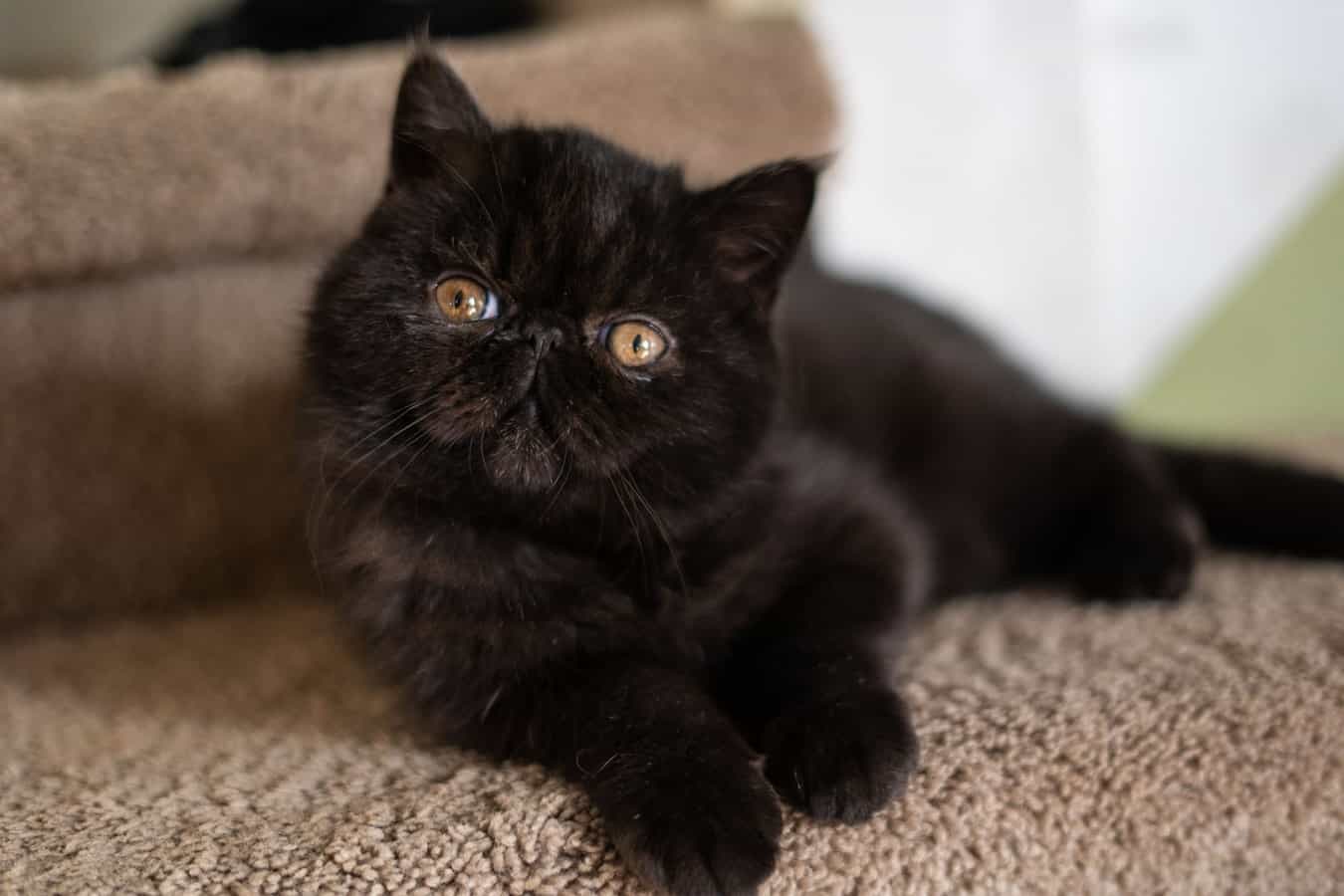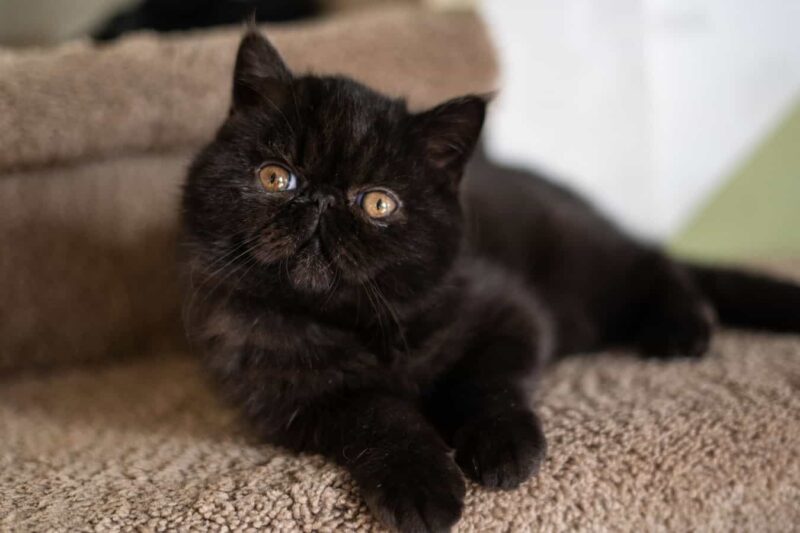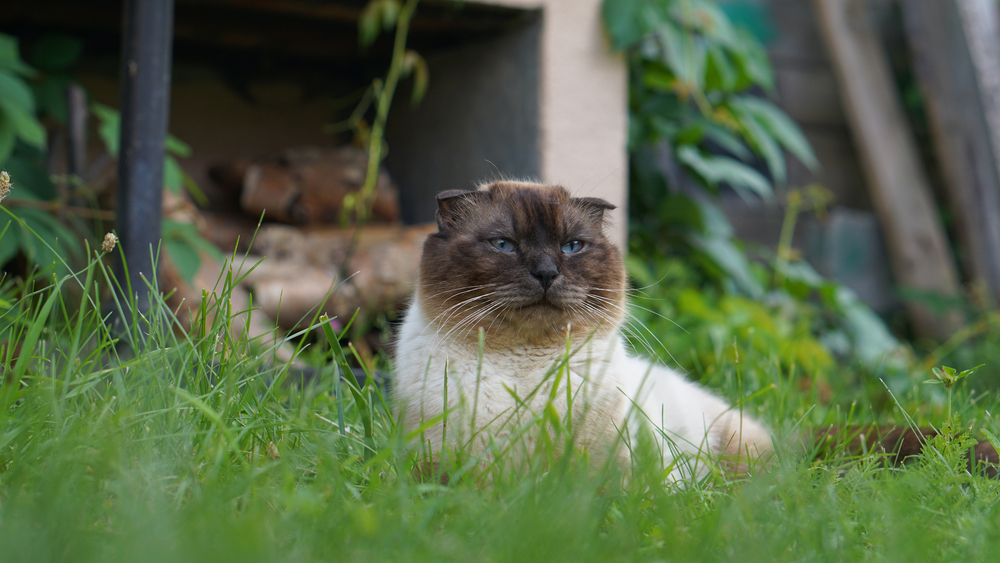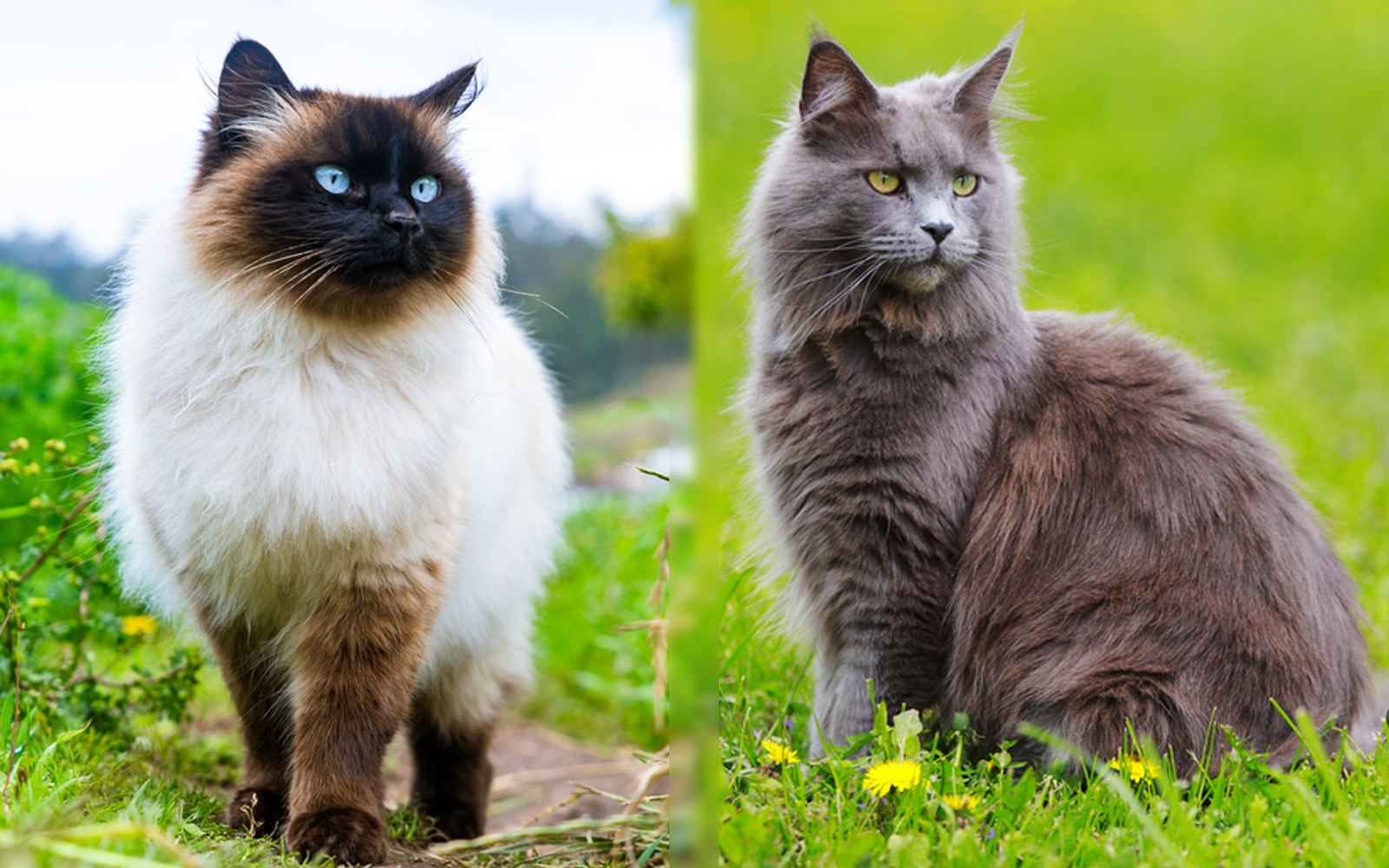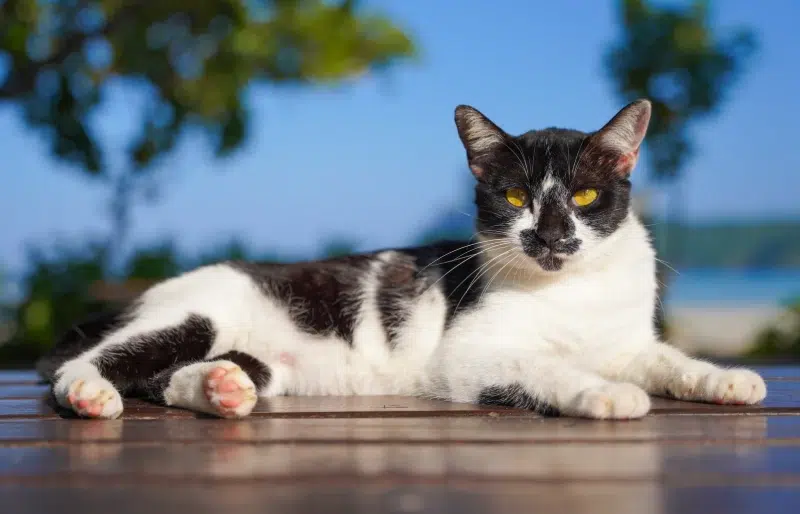Click to Skip Ahead
Ready to learn all about the Exotic Shorthair cat breed? This delightful and heartwarming feline presents a mix of Persian charm and easy-care convenience. With their teddy bear-like appearance, docile demeanor, and beautifully plush coats, these cats are the epitome of feline companionship.
Let’s embark on a journey to discover more about this exceptional breed, which wins over hearts with its round face, sparkling eyes, and an array of delightful personality traits.
Breed Overview
Height:
10–12 inches
Weight:
10–12 pounds
Lifespan:
8–15 years
Colors:
Black, blue, ebony, sable, cream, cinnamon, beige, lavender, lilac, silver, red, white, orange
Suitable for:
Seniors, children, families with other pets
Temperament:
Families with pets and children, seniors
The Exotic Shorthair is the perfect blend of a Persian cat’s characteristics with an easy-to-manage coat. It is a playful, friendly, and intelligent breed that is easy to train and forms a deep bond with its family. The breed’s versatile coloring is another captivating aspect, adding more charm to its already endearing personality.
Exotic Shorthair Cat Characteristics
Exotic Shorthair Kittens
From the moment they open their eyes, Exotic Shorthair kittens capture hearts with their teddy bear-like appearance and lively energy. Their short, plush coat and large expressive eyes give them an irresistible appeal that quickly makes them the center of attention.
These kittens carry an air of curiosity, making every mundane object a toy of interest, filling their immediate surroundings with delightful playfulness. However, bringing an Exotic Shorthair kitten home might require a bit of effort.
They are not a very common breed, which makes finding one a task of patience. Though you might occasionally find Exotic Shorthair kittens in rescue centers, the most reliable option is to seek out a reputable breeder who prioritizes health and temperament in their breeding program. Be prepared to join a waiting list, as these adorable furballs are quite sought after!
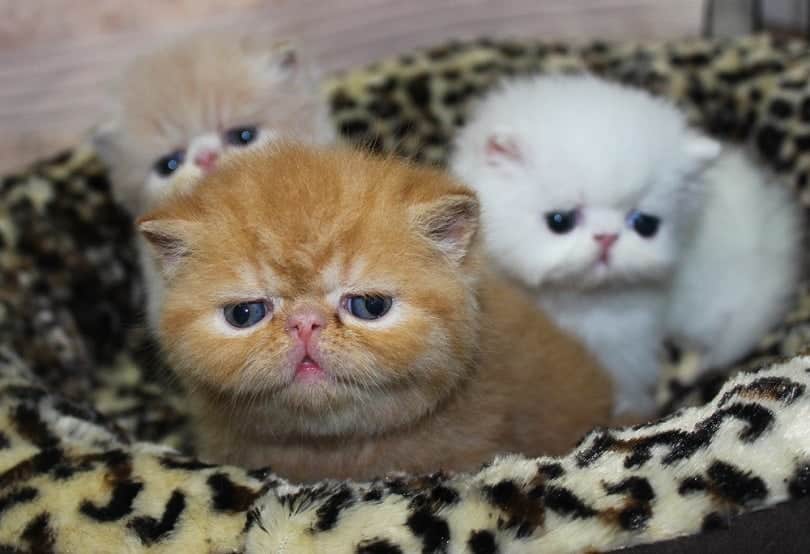

Temperament & Intelligence of the Exotic Shorthair Cat
Exotic Shorthair cats are an intelligent breed characterized by their serene and affectionate disposition. This breed is known for its sharp cognitive abilities. They are quick learners, showing an ability to understand and adapt to their human’s routine and commands. This intelligence also translates to their playful nature, as they enjoy interactive toys and games that challenge their minds.
But the Exotic Shorthair is not just about play and intelligence. It’s a breed known for its deep loyalty and affection toward its family members. They create a strong bond with their humans, offering immense love and forming an inseparable connection.
They are often found following their owners around the house, quietly observing their activities with a loving gaze. So, if you eventually adopt an Exotic Shorthair, you can expect a loyal companion who stays by your side.
Are These Cats Good for Families?
Exotic Shorthair cats are not just good for families; they are exceptional! Their friendly nature and adaptability make them a wonderful addition to households of all sizes. They are patient and gentle, which makes them a fantastic companion for children. At the same time, they are not overly demanding of attention, allowing them to fit seamlessly into the busy schedule of adults.
They are the kind of pets that fill a home with warmth and joy. Their presence has a calming effect, and their antics provide endless entertainment. Despite their serene disposition, they enjoy participating in family activities, making them excellent family pets.
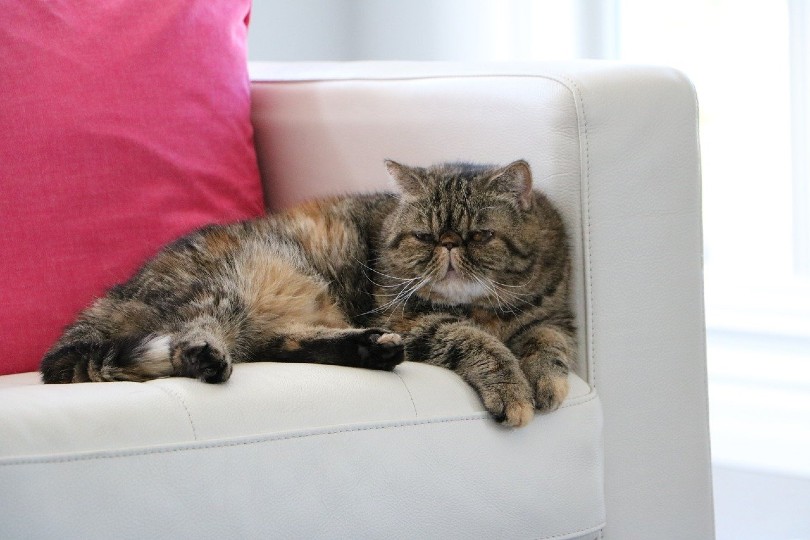
Does This Breed Get Along with Other Pets?
Exotic Shorthair cats are generally great with other pets. Their calm and amiable nature, paired with their non-confrontational attitude, allows them to get along quite well in a multi-pet household. Whether it’s another cat or even a dog, the Exotic Shorthair is usually very accepting.
They are not known to be territorial and can form friendly relationships with other pets over time. However, as with all pet introductions, it’s important to supervise initial interactions to ensure they are positive.
With their tolerant nature and capacity for friendship, Exotic Shorthairs can indeed become a companion for your existing pet, adding to the harmonious dynamic of your home.

Things to Know When Owning an Exotic Shorthair Cat:
Food & Diet Requirements
An Exotic Shorthair cat requires a balanced diet to maintain its overall health. Since this breed is prone to obesity, it is crucial to monitor their food intake carefully. Ensure that you feed your cat with high-quality cat food, rich in protein and low in carbohydrates, to promote optimal health.
Treats should be given sparingly and should constitute no more than 10% of their total calorie intake. Consult with a veterinarian to establish a suitable feeding schedule and diet plan.
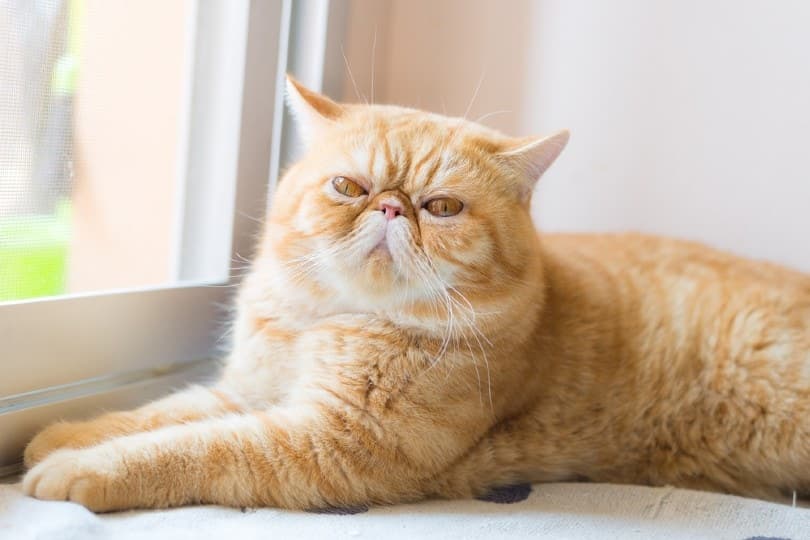
Exercise
Despite their plush and somewhat lazy appearance, Exotic Shorthairs are moderately active cats. They enjoy interactive play sessions which not only cater to their exercise needs but also provide mental stimulation.
Toys like feather wands, laser pointers, and puzzle feeders can be excellent tools to encourage physical activity. Regular exercise can help prevent obesity and related health issues.
Training
Exotic Shorthairs are intelligent cats, making them generally easy to train. They respond particularly well to positive reinforcement techniques. Be patient and consistent with your training methods. Regularly reward your cat with treats and praise to encourage good behavior. Whether you are toilet training or teaching them tricks, this breed is quick to learn and eager to please.
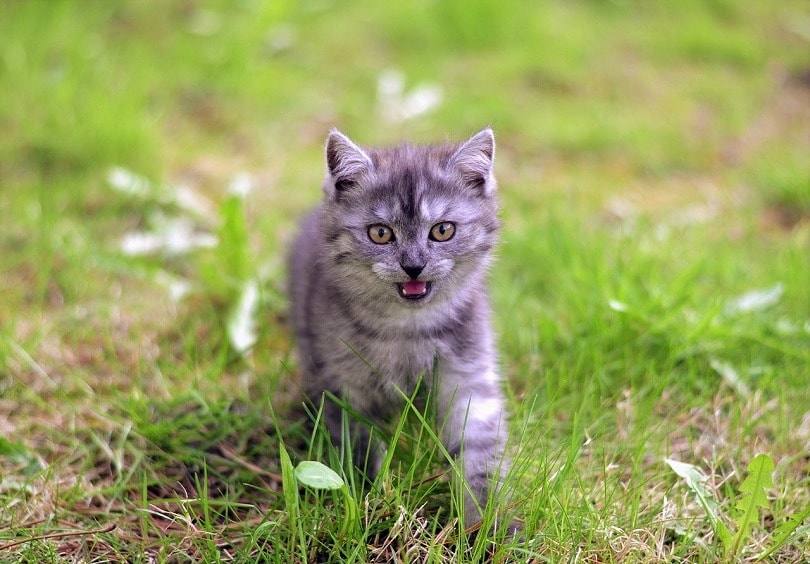
Grooming ✂️
Exotic Shorthairs have a short, dense coat that is relatively easy to groom. Regular brushing (about once or twice a week) is generally enough to keep their coat looking healthy and shiny. Brushing also helps to minimize shedding and prevent hairballs. Other grooming requirements include regular dental care, nail clipping, and ear cleaning.
Health & Conditions
- Dental issues
- Obesity
- Brachycephalic syndrome
- Polycystic kidney disease
Male vs Female
Male and female Exotic Shorthairs have similar personality traits, making them both ideal companions. Both genders are known for their placid temperament, friendliness, and affectionate nature. However, it is worth noting that males might be slightly larger than females in terms of size.
Also, keep in mind that the behavior of individual cats may vary, regardless of their gender. Therefore, choose a cat based on its personality and how well it fits with your lifestyle.

3 Little-Known Facts About the Exotic Shorthair Cat
1. They Have an Interesting Origin Story
The Exotic Shorthair cat has a fascinating backstory that dates to the 1960s. Breeders aiming to enhance the American Shorthair’s body type decided to experiment by crossing it with the luxurious Persian breed.
The outcome was the Exotic Shorthair, which inherited the best of both worlds: the Persian’s plush physicality and the American Shorthair’s robust structure. This breed, although relatively new in the cat world, quickly won hearts with its unique charm and personality, affirming that the breeding experiment was indeed a successful venture.
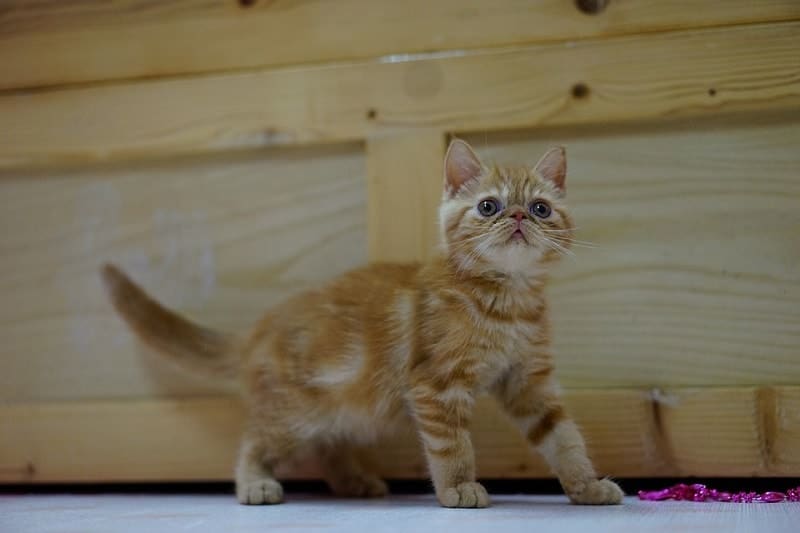
2. These Cats Are Called “Lazy Man’s Persian”
Due to its remarkable resemblance to the Persian breed but with much simpler grooming requirements, the Exotic Shorthair has earned a playful nickname: the “Lazy Man’s Persian”. This moniker highlights the ease of care that accompanies this breed.
While the Exotic Shorthair displays the captivating appeal of the Persian cat with its plush coat and round, expressive eyes, it does not demand the meticulous grooming that the long-haired Persians require. This distinctive trait makes it a desirable pet for those who are drawn to the Persian breed but are deterred by the prospect of high-maintenance grooming.
3. The Exotic Shorthair Is an Award Winner
In the realm of feline fancy, the Exotic Shorthair made a significant mark in 1991. That year, an Exotic Shorthair cat was crowned the “Cat of the Year” by the Cat Fanciers Association, a prestigious award given annually to an outstanding specimen from one of the recognized breeds.
This was a momentous occasion, as it was the first time an Exotic Shorthair had won this illustrious title. This accolade not only amplified the breed’s popularity but also affirmed the endearing qualities that make it a highly cherished pet among cat lovers.
Final Thoughts
The Exotic Shorthair is an enchanting blend of charm, playfulness, and loyalty. Their low-maintenance grooming needs, coupled with their loving and gentle nature, make them an excellent choice for any cat lover. If you are seeking a sociable, easy-going companion, this teddy bear-like breed could be the perfect fit for your home.
Read Also:
Featured Image Credit: Unsplash

